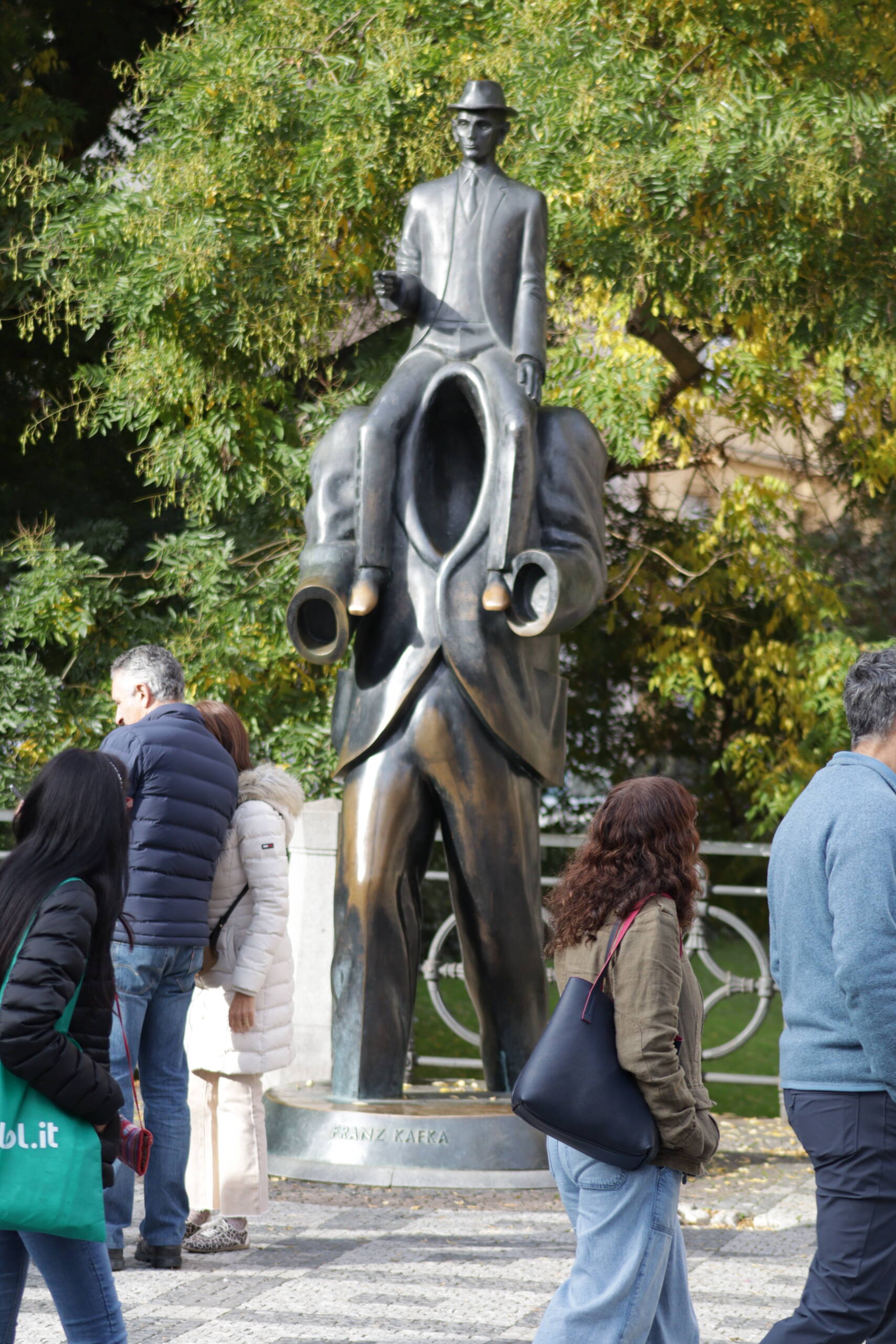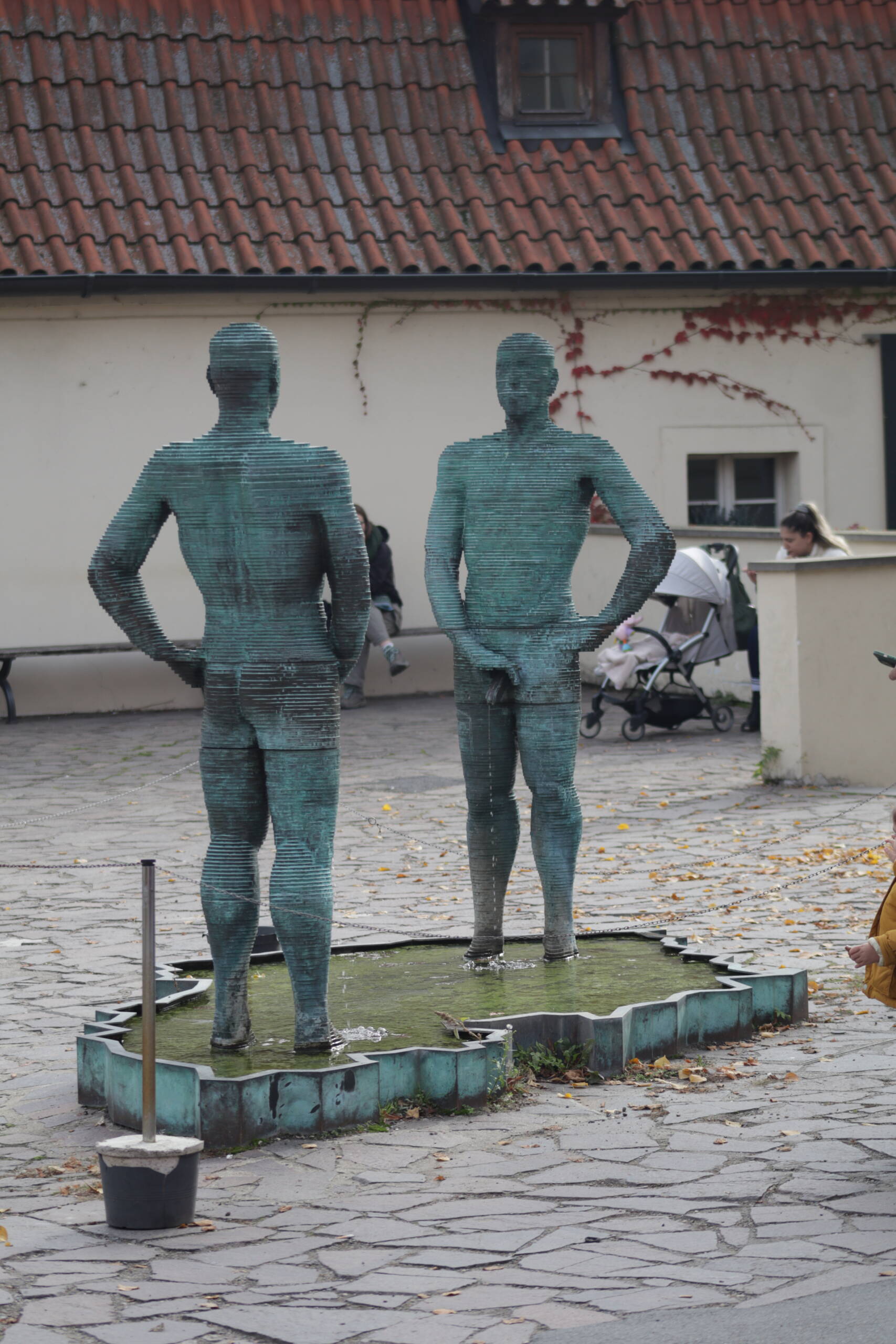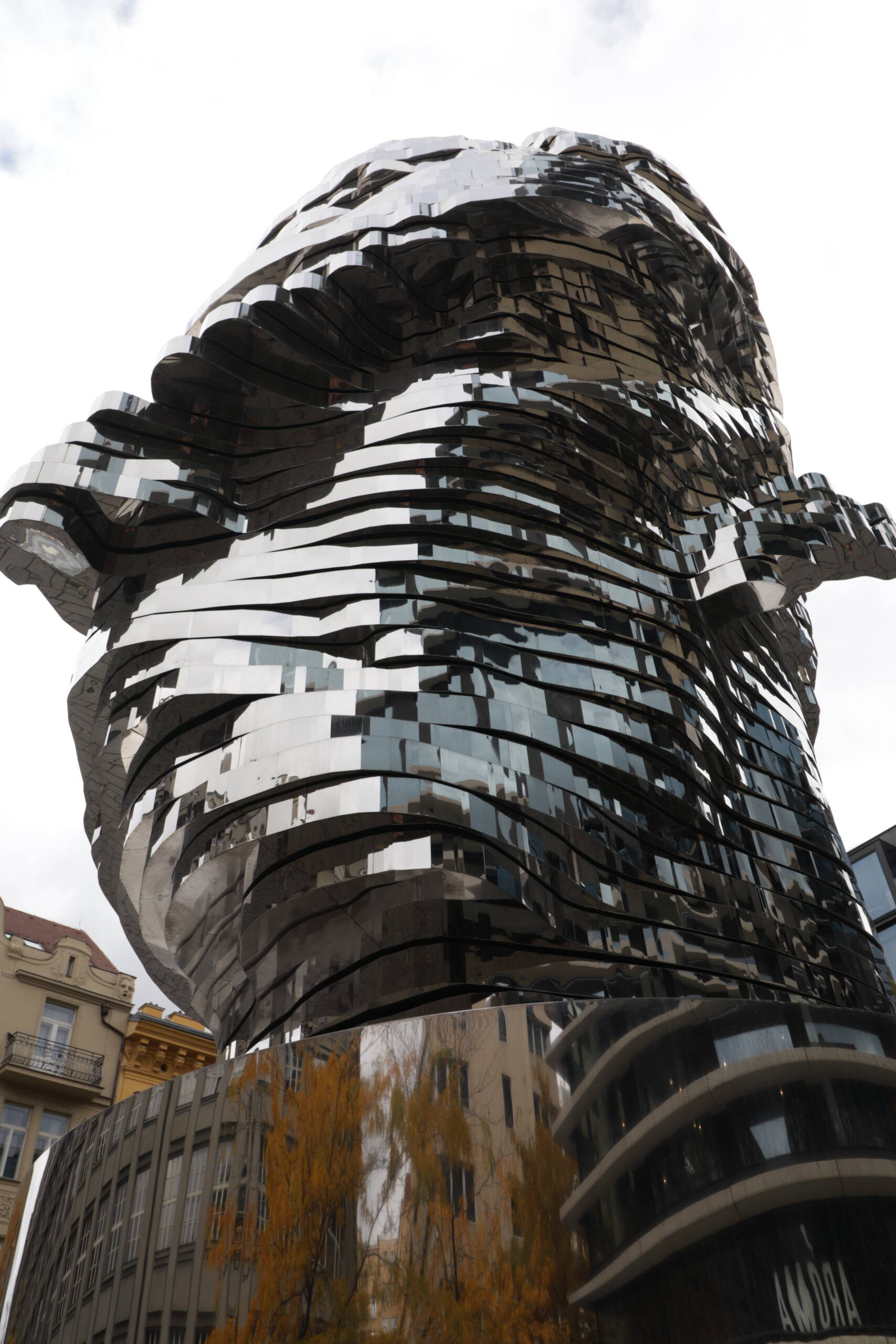Walking through Prague, it’s easy to stumble upon corners where literature has taken physical form, and nowhere is this more striking than the Franz Kafka Monument near the Spanish Synagogue. At first glance, the statue looks bizarre, almost unsettling. A headless, hollow figure in a bulky overcoat strides forward with confidence, yet its body is nothing but an empty shell. Perched atop its shoulders is a smaller man, sharp in his suit and fedora, holding his hand slightly outward as if both presenting himself and simultaneously clinging to something intangible. It doesn’t take long to recognize this is Kafka himself, eternally carried by an absurd, faceless presence.

The design is pure surrealism, but also deeply personal. Created by Czech sculptor Jaroslav Róna in 2003, the monument is inspired by a scene from Kafka’s early short story Description of a Struggle. In that work, a man rides on another’s shoulders through Prague’s streets, an image that perfectly captures Kafka’s blend of the mundane and the nightmarishly strange. Here, bronze makes visible that exact sensation—an elegant, suited figure supported by a hulking void. You can almost feel the paradox: the dignity of Kafka’s words set against the weight of anonymity, bureaucracy, and absurdity. It’s a scene that refuses to resolve itself, much like his stories.
And then, just a short walk across the river, you stumble into another absurd spectacle: David Černý’s infamous Piss sculpture, placed boldly in the courtyard in front of the Kafka Museum. Two bronze male figures, segmented like geological layers, stand facing each other in a shallow pool shaped like the outline of the Czech Republic. What makes people laugh, cringe, or shake their heads is that these figures are mechanized—yes, they urinate into the water, hips moving, streams shifting to “write” words. Visitors can even text a number to have the statues “spell out” their message in liquid script. The fact that this irreverent installation greets you right at the entrance to a museum devoted to Kafka himself feels deliberate, almost a provocation: you can’t enter the shrine to Prague’s most enigmatic writer without first confronting a scene that is as absurd, comic, and unsettling as his prose.

Where the Kafka statue embodies the haunting weight of the unseen and the unknowable, Černý’s piece is brash, satirical, and vulgar in the most deliberate way. It pokes at national pride, mocks solemnity, and forces you to confront how thin the line is between dignity and ridicule. Standing in front of both works in the same afternoon, you can sense a thread: Prague doesn’t just celebrate its culture and history; it confronts it with irony, provocation, and a refusal to let meaning rest comfortably.
And as if the city wanted to seal this artistic statement, another monumental creation rises above the bustling shopping district: Head of Franz Kafka, again by David Černý. This massive, mirrored sculpture is composed of 42 rotating stainless steel layers, each segment constantly shifting to reassemble and disassemble Kafka’s face in real time. The reflections of nearby buildings, clouds, and pedestrians ripple across its surface, making the entire head feel alive, fluid, and unstable—like an identity never quite settled. Watching it turn, break apart, and come together again is hypnotic, like witnessing the physical embodiment of Kafka’s themes of fragmentation, transformation, and the futility of finding permanence in a world of constant change.

Seeing these three works—the bronze Kafka riding a faceless giant, the irreverent urinating figures at the Kafka Museum, and the mechanical steel head—together gives you a fuller picture of Prague’s character. The city isn’t afraid of contradictions: solemn and satirical, reverent and irreverent, haunting and humorous. Each sculpture is a reminder that Prague is as much about unsettling questions as it is about picturesque beauty. It’s a city where absurdity is not just tolerated, but celebrated—and somehow, that makes it all feel perfectly, unmistakably Kafkaesque.
Leave a Reply